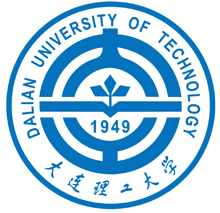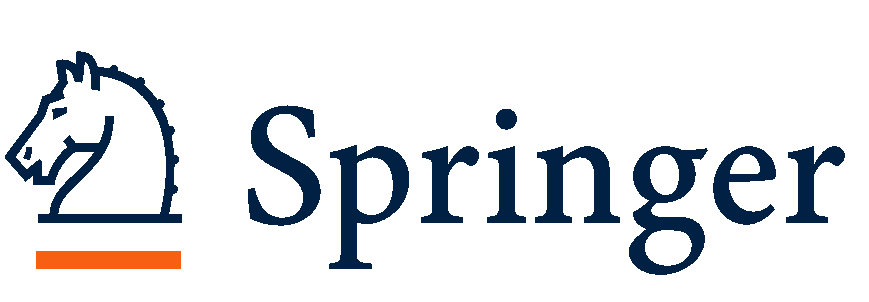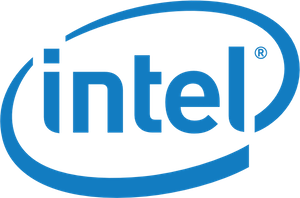◆ Mirella Lapata, Professor, School of Informatics at the University of Edinburgh
Keynote Topic: Understanding Visual Scenes
Short Bio: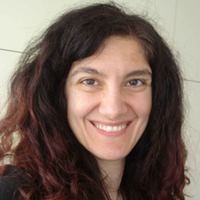 Mirella Lapata is professor of natural language processing in the School of Informatics at the University of Edinburgh. Her research focuses on getting computers to understand, reason with, and generate. She is as an associate editor of the Journal of Artificial Intelligence Research and has served on the editorial boards of Transactions of the ACL and Computational Linguistics. She was the first recipient of the Karen Sparck Jones award of the British Computer Society, recognizing key contributions to NLP and information retrieval. She received two EMNLP best paper awards and currently holds a prestigious Consolidator Grant from the European Research Council.
Mirella Lapata is professor of natural language processing in the School of Informatics at the University of Edinburgh. Her research focuses on getting computers to understand, reason with, and generate. She is as an associate editor of the Journal of Artificial Intelligence Research and has served on the editorial boards of Transactions of the ACL and Computational Linguistics. She was the first recipient of the Karen Sparck Jones award of the British Computer Society, recognizing key contributions to NLP and information retrieval. She received two EMNLP best paper awards and currently holds a prestigious Consolidator Grant from the European Research Council.
Abstract: A growing body of recent work focuses on the challenging problem of scene understanding using a variety of cross-modal methods which fuse techniques from image and text processing. In this talk I will discuss structured representations for capturing the semantics of scenes (working out who does what to whom in an image). In the first part I will introduce representations which explicitly encode the objects detected in a scene and their spatial relations. These representations resemble well-known linguistic structures, namely constituents and dependencies, are created deterministically, can be applied to any image dataset, and are amenable to standard NLP tools developed for tree-based structures. In the second part, I will focus on visual sense disambiguation, the task of assigning the correct sense of a verb depicted in an image. I will showcase the benefits of the proposed representations in applications such as image description generation and image-based retrieval.
◆ Jianfeng Gao, Partner Research Manager at Microsoft AI and Research, Redmond
Keynote Topic: From Symbolic to Neural Approaches to NLP – Case Studies of Machine Reading and Dialogue
Short Bio: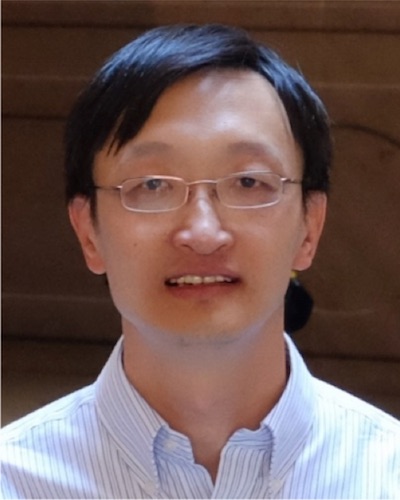 Jianfeng Gao is Partner Research Manager at Microsoft AI and Research, Redmond. He works on deep learning for text and image processing and leads the development of AI systems for machine reading comprehension (MRC), question answering (QA), dialogue, and business applications. From 2006 to 2014, he was Principal Researcher at Natural Language Processing Group at Microsoft Research, Redmond, where he worked on Web search, query understanding and reformulation, ads prediction, and statistical machine translation. From 2005 to 2006, he was a Research Lead in Natural Interactive Services Division at Microsoft, where he worked on Project X, an effort of developing natural user interface for Windows. From 2000 to 2005, he was Research Lead in Natural Language Computing Group at Microsoft Research Asia, where he and his colleagues developed the first Chinese speech recognition system released with Microsoft Office, the Chinese/Japanese Input Method Editors (IME) which were the leading products in the market, and the natural language platform for Microsoft Windows.
Jianfeng Gao is Partner Research Manager at Microsoft AI and Research, Redmond. He works on deep learning for text and image processing and leads the development of AI systems for machine reading comprehension (MRC), question answering (QA), dialogue, and business applications. From 2006 to 2014, he was Principal Researcher at Natural Language Processing Group at Microsoft Research, Redmond, where he worked on Web search, query understanding and reformulation, ads prediction, and statistical machine translation. From 2005 to 2006, he was a Research Lead in Natural Interactive Services Division at Microsoft, where he worked on Project X, an effort of developing natural user interface for Windows. From 2000 to 2005, he was Research Lead in Natural Language Computing Group at Microsoft Research Asia, where he and his colleagues developed the first Chinese speech recognition system released with Microsoft Office, the Chinese/Japanese Input Method Editors (IME) which were the leading products in the market, and the natural language platform for Microsoft Windows.
Abstract: In this talk, I start with a brief review of the history of symbolic approaches to NLP, and discuss why we are moving to neural approaches. Then I describe in detail the deep learning and reinforcement learning technologies that are recently developed for NLP. I pick two areas as case studies. First is a set of neural attention and inference models developed for machine reading comprehension and question answering. Second is the use of deep (reinforcement) learning for building different types of dialogue agents, ranging from task-completion bots to social chat bots.
◆ Noah Smith, Associate Professor, Paul G. Allen School of Computer Science & Engineering at the University of Washington
Keynote Topic: Squashing Computational Linguistics
Short Bio: Noah Smith is an Associate Professor in the Paul G. Allen School of Computer Science & Engineering at the University of Washington. Previously, he was an Associate Professor of Language Technologies and Machine Learning in the School of Computer Science at Carnegie Mellon University. He received his Ph.D. in Computer Science from Johns Hopkins University in 2006 and his B.S. in Computer Science and B.A. in Linguistics from the University of Maryland in 2001. His research interests include statistical natural language processing, especially unsupervised methods, machine learning, and applications of natural language processing. His book, Linguistic Structure Prediction, covers many of these topics. He has served on the editorial board of the journals Computational Linguistics (2009–2011), Journal of Artificial Intelligence Research (2011–present), and Transactions of the Association for Computational Linguistics (2012–present), as the secretary-treasurer of SIGDAT (2012–2015), and as program co-chair of ACL 2016. Alumni of his research group, Noah's ARK, are international leaders in NLP in academia and industry. Smith's work has been recognized with a UW Innovation award (2016–2018), a Finmeccanica career development chair at CMU (2011–2014), an NSF CAREER award (2011–2016), a Hertz Foundation graduate fellowship (2001–2006), numerous best paper nominations and awards, and coverage by NPR, BBC, CBC, New York Times, Washington Post, and Time.
Noah Smith is an Associate Professor in the Paul G. Allen School of Computer Science & Engineering at the University of Washington. Previously, he was an Associate Professor of Language Technologies and Machine Learning in the School of Computer Science at Carnegie Mellon University. He received his Ph.D. in Computer Science from Johns Hopkins University in 2006 and his B.S. in Computer Science and B.A. in Linguistics from the University of Maryland in 2001. His research interests include statistical natural language processing, especially unsupervised methods, machine learning, and applications of natural language processing. His book, Linguistic Structure Prediction, covers many of these topics. He has served on the editorial board of the journals Computational Linguistics (2009–2011), Journal of Artificial Intelligence Research (2011–present), and Transactions of the Association for Computational Linguistics (2012–present), as the secretary-treasurer of SIGDAT (2012–2015), and as program co-chair of ACL 2016. Alumni of his research group, Noah's ARK, are international leaders in NLP in academia and industry. Smith's work has been recognized with a UW Innovation award (2016–2018), a Finmeccanica career development chair at CMU (2011–2014), an NSF CAREER award (2011–2016), a Hertz Foundation graduate fellowship (2001–2006), numerous best paper nominations and awards, and coverage by NPR, BBC, CBC, New York Times, Washington Post, and Time.
Abstract: The computational linguistics and natural language processing community is experiencing an episode of deep fascination with representation learning. Like many other presenters at this conference, I will describe new ways to use representation learning in models of natural language. Noting that a data-driven model always assumes a theory (not necessarily a good one), I will argue for the benefits of language-appropriate inductive bias for representation-learning-infused models of language. Such bias often comes in the form of assumptions baked into a model, constraints on an inference algorithm, or linguistic analysis applied to data. Indeed, many decades of research in linguistics (including computational linguistics) put our community in a strong position to identify promising inductive biases. The new models, in turn, may allow us to explore previously unavailable forms of bias, and to produce findings of interest to linguistics. I will focus on new models of documents and of sentential semantic structures, and I will emphasize abstract, reusable components and their assumptions rather than applications.
◆ Hua Wu, the President of Baidu Technical Committee
Keynote Topic: Natural Language Processing and Its Applications at Baidu
Short Bio: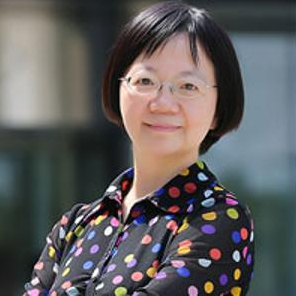 Hua Wu is the president of Baidu technical committee and the technical chief of Baidu’s natural language processing department. Her research interests includes machine translation, dialogue systems, question answering, knowledge mining etc., and many of her innovative researches have been transferred to Baidu products. She was a leading member of the machine translation project to win the second prize of the State Preeminent Science and Technology Award of China. She severed as the program co-chair of ACL 2014, and area chairs or SPC of several conferences including IJCNLP, ACL, IJCAI and AAAI.
Hua Wu is the president of Baidu technical committee and the technical chief of Baidu’s natural language processing department. Her research interests includes machine translation, dialogue systems, question answering, knowledge mining etc., and many of her innovative researches have been transferred to Baidu products. She was a leading member of the machine translation project to win the second prize of the State Preeminent Science and Technology Award of China. She severed as the program co-chair of ACL 2014, and area chairs or SPC of several conferences including IJCNLP, ACL, IJCAI and AAAI.
Abstract: Natural language processing (NLP) is one of the core fields in artificial intelligence. Many technologies of NLP such as machine translation, question answering and dialogue systems have been transferred to products, stretching the abilities of human beings and therefore making life easier and simpler. In this talk, I will introduce Baidu’s NLP technologies, especially how to combine knowledge, machine learning and NLP methods to solve real application problems, and how the technologies evolve according to users demand. Now the NLP technologies support about 100 applications at Baidu and the modules are called up more than 200 billion times per day. Some of them are available at Baidu’s AI platform http://ai.baidu.com, including lexical analysis, syntactic parsing, semantic analysis and calculation, sentiment analysis, query understanding, dialogue management, machine translation, etc.


